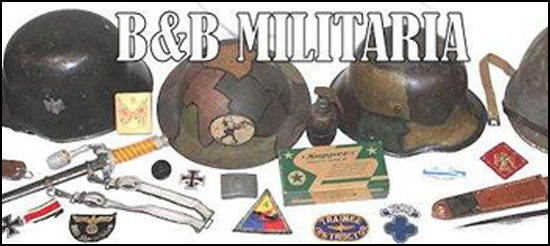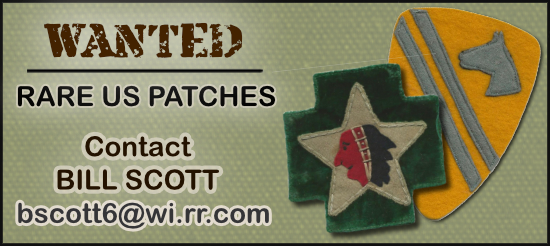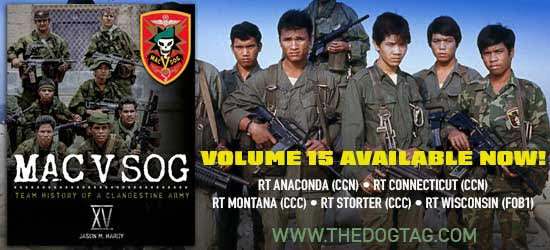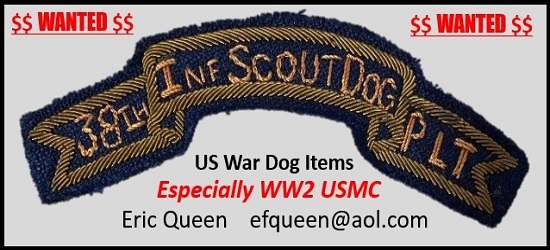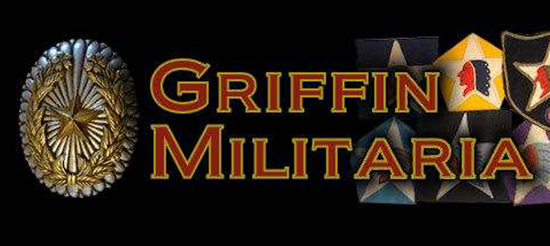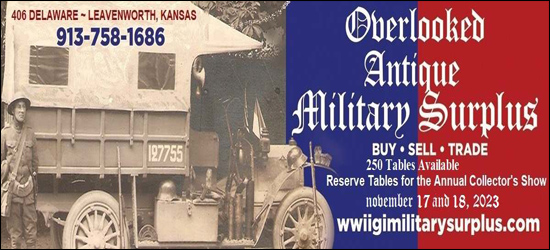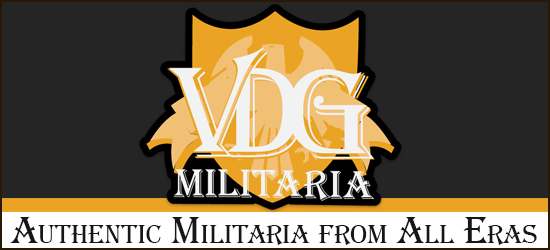-
Donate
Type donation amount in box below.
IMPORTANT! If you donate via PayPal using an e-mail address different than the one you are currently using on USMF and would like a 2024 Donor Icon added to your account, you MUST CONTACT vintageproductions or stratasfan and let them know what email address was used for the donation.
Thank you for supporting USMF.
Donate Sidebar by DevFuse -
Recent Posts
-

-

By 101CH47 · Posted
This cleaning kit arrived today and the sections are a bit different than what I have see in other photos here. The jag is on a long section rather than being a short separate piece. Curious if anyone has seen rod sections like this? -

By TrevorR · Posted
1st. Sgt. Thomas J Sweeney Co. A, 165th Infantry Regiment 42nd Infantry Division WIA 31 July 1918 and 16 October 1918 Silver Star and Distinguished Service Cross Battle of Ourcq 27 July 1918 The 165th Infantry Regiment in the shell torn town of Courpoil. The Croix Rouge Farm was the last stone of the Germans south of the Ourcq. The main attack point for Co. A of the 165th Regiment was the Meurcy Farm. Extensive artillery and MG fire came from well placed MG nest. During the attack on 28 July Lt. William W. Baldwin was struck on the chest and his last words were “Sweeney, carry out the orders”. 1st Sgt. Sweeney took over command and pressed the attack and gained ground in the objective. Hours after Lt. Baldwin’s death, Lt. Henry Kelly took command of the unit. 1st Sgt. Sweeney was awarded the Silver Star for his actions during the battle. On 30 July 1918 1st Sgt. Sweeney and Lt. D’Aguerro were sitting on the edge of hole eating a can of corn when they were both struck by the same bullet. United States Army Rank: First Sergeant Regiment: 165th Infantry Regiment Division: 42d Division, American Expeditionary Forces Action Date: July 28, 1918 GHQ, American Expeditionary Forces, Citation Orders No. 5 (June 3, 1919) By direction of the President, under the provisions of the act of Congress approved July 9, 1918 (Bul. No. 43, W.D., 1918), First Sergeant Thomas Joseph Sweeney (ASN: 89001), United States Army, is cited by the Commanding General, American Expeditionary Forces, for gallantry in action and a silver star may be placed upon the ribbon of the Victory Medals awarded him. First Sergeant Sweeney distinguished himself by gallantry in action while serving with Company A, 165th Infantry Regiment, 42d Division, American Expeditionary Forces, in action near Villers-sur-Fere, France, 28 July 1918, in assuming command of and brilliantly leading his company in the advance. Meuse- Argonne Offensive On the morning of 15 October 1918 the objective of the First Battalion was Marye’s Heights. At the jump off for the attack, they came under intense fire causing heavy casualties. Col. Donovan called for the mortars to repel the German counter attack to assist the evacuation of the First Battalion. Due to heavy casualties, 1st Sgt. Sweeney supervised the carrying of wounded while exposing himself to continuous enemy fire. 1st. Sgt. Sweeney was awarded the Distinguished Service Cross for his actions. He again was wounded at this time. Service: United States Army Rank: First Sergeant Regiment: 165th Infantry Regiment Division: 42d Division, American Expeditionary Forces Action Date: October 15, 1918 War Department, General Orders No. 37 (1919) The President of the United States of America, authorized by Act of Congress, July 9, 1918, takes pleasure in presenting the Distinguished Service Cross to First Sergeant Thomas Joseph Sweeney (ASN: 89001), United States Army, for extraordinary heroism in action while serving with Company A, 165th Infantry Regiment, 42d Division, American Expeditionary Forces, near Landres-et-St. Georges, France, 15 October 1918. Sergeant Sweeney courageously supervised the carrying of the wounded, his duties exposing him at all times to the continuous fire of the enemy. By his valor and strict devotion to duty, all the wounded were safely evacuated. -

By mvmhm · Posted
I received the Arctic Service Medal today and it's got one brilliant thing about it - the obverse of the medal is convex, so when you look at it, the planchet looks like you're looking at the top of a globe! That should drive the flat-earthers bonkers. Bravo Zulu, medal designer! Mark sends -

By 268th C.A. · Posted
the 25th Infantry Division and the 25th Infantry Regt are not the same -

By manayunkman · Posted
Yard sailing in the rain today. Young Marine shirt the was worn by a 7-9 year old towards the end of the Vietnam war but he didn’t go into the Marines. -

By mikie · Posted
I hate it when it rains on my parade. But I guess the pub owners didn’t mind the bad weather. Oh what a nice doggie! I hope the weather improves for the rest of the festivities . mikie -

By Kornfield · Posted
Thanks so much. There was a stray patch of the 25th and wondered. -

-

By 268th C.A. · Posted
Post World War II [edit] Right after the 25th Infantry Regiment was inactivated in February 1946 at Camp Stoneman, California, it was brought back to life during the period February–May 1946 at Fort Benning, Georgia. But first, the 107th Regimental Combat Team (RCT) (Colored) is worth mentioning and is part of this story. First Army activated the 107th RCT at Fort Benning, Georgia on 21 February 1946. Built around the 107th Infantry Regiment, it was activated with all the required supporting forces: the 571st Field Artillery Battalion (105mm Howitzer, Truck Drawn); 22d Medium Tank Company; 973d Engineer Combat Company; and the 375th Medical Collecting Company. The 107th had recently been assigned the 196th Army Ground Forces Band (Colored) from Camp Shelby, Mississippi. The 107th RCT had an assigned strength of 139 officers, 7 warrant officers, and 2,662 enlisted men. Officer personnel were white and colored while enlisted personnel were all colored. The 107th RCT history would be short-lived. On 21 March 1946, the 107th would be reflagged as the 25th Regimental Combat Team (Colored) assigned to Fourth Headquarters, First Army and would inherit all the units of the 107th RCT minus the 107th Infantry Regiment. The first commander of the 25th RCT was Colonel (later BG) Robert L. Dulaney a veteran of WWII in Europe. On 6 April, the regiment was selected to march in the Army Day parade down Constitution Avenue in Washington, D.C. representing all veterans from WWI and WWII. On 18 April 1946, the entire 25th RCT moved to the Sand Hill area of Fort Benning. In May 1946, the 25th RCT activated its 3d Battalion which had been unfilled since 21 March 1946. With the new 3d battalion now part of the 25th RCT, personnel would increase by 139 officers, 5 warrant officers, and 2810 enlisted personnel for a 25th RCT total of approximately 4,000 soldiers. In early November 1946, the 25th RCT regimental colors were returned to the unit in a ceremony at the 25th RCT parade grounds at the Sand Hill area. Also in November 1946, the 25th RCT established a new two-year educational program geared towards enlisted soldiers lacking education below the 8th grade. As part of their training, the program was designed to raise to an 8th grade level those students that fell into the educational sub-par brackets of IV and V on the Army General Classification Test. Some 1,900 25th RCT students began the program in early November 1946 at Fort Benning, Georgia.
-
-
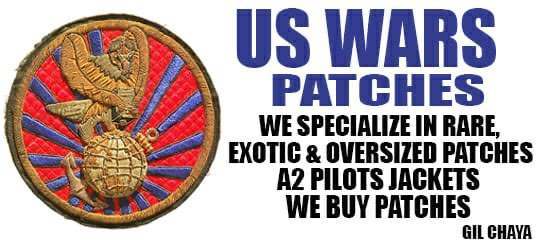
-

-
* While this forum is partially supported by our advertisers, we make no claim nor endorsement of authenticity of the products which these advertisers sell. If you have an issue with any advertiser, please take it up with them and not with the owner or staff of this forum.





